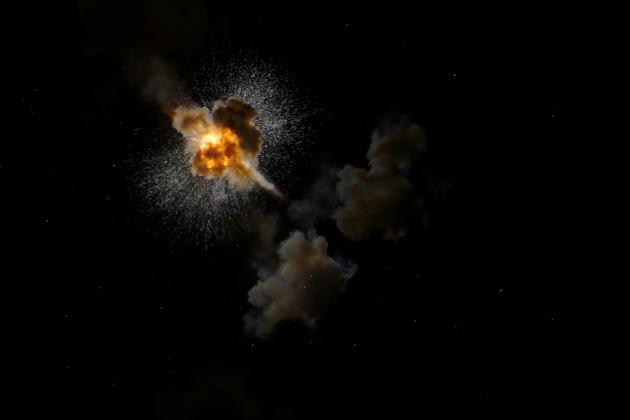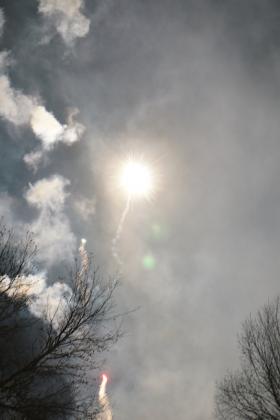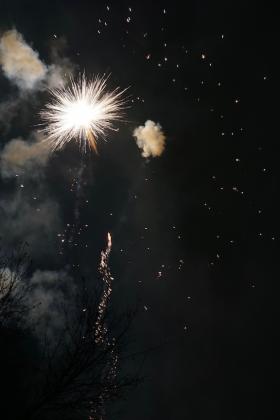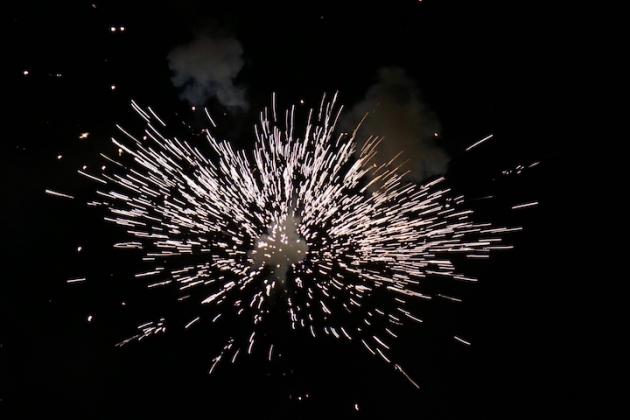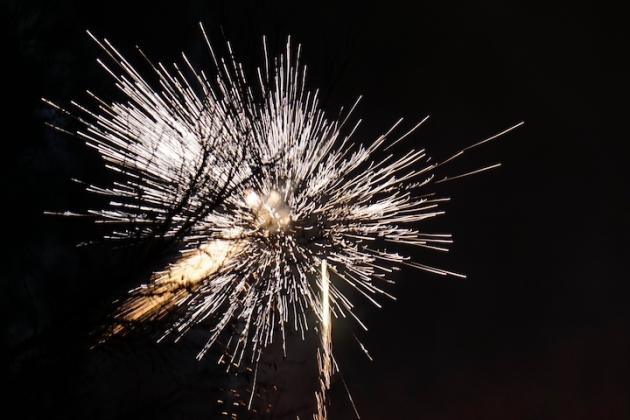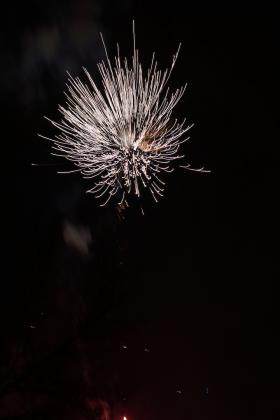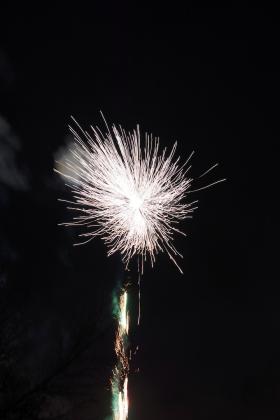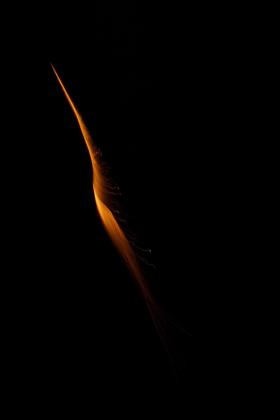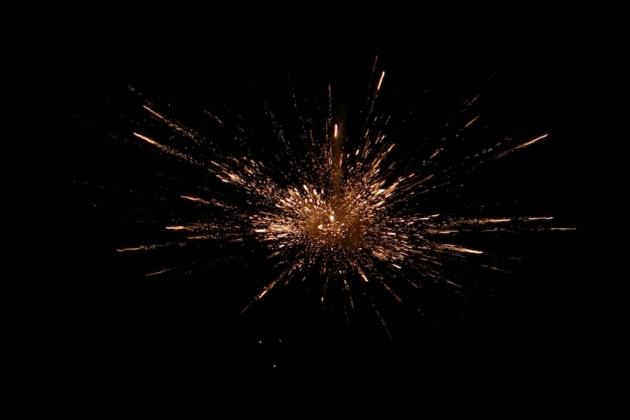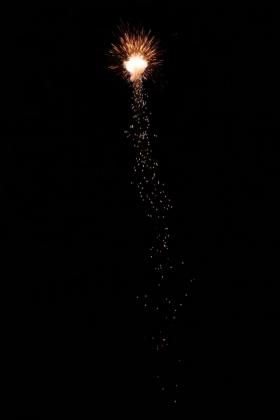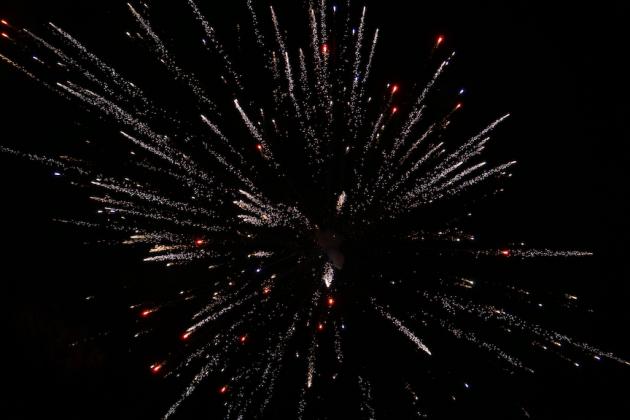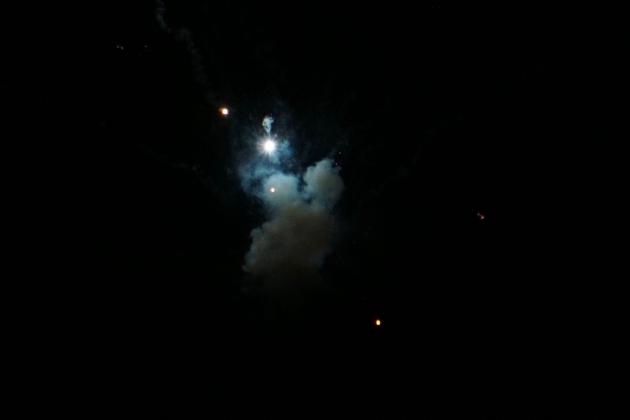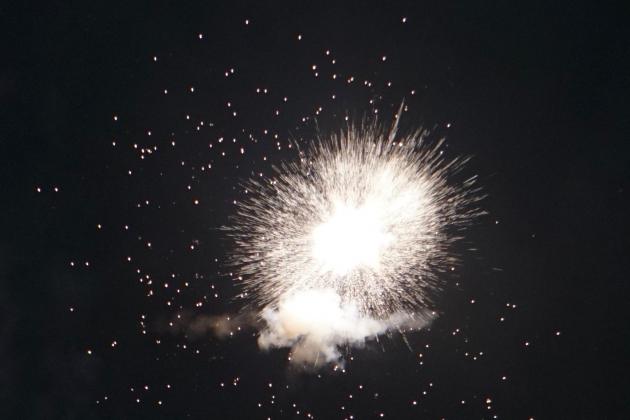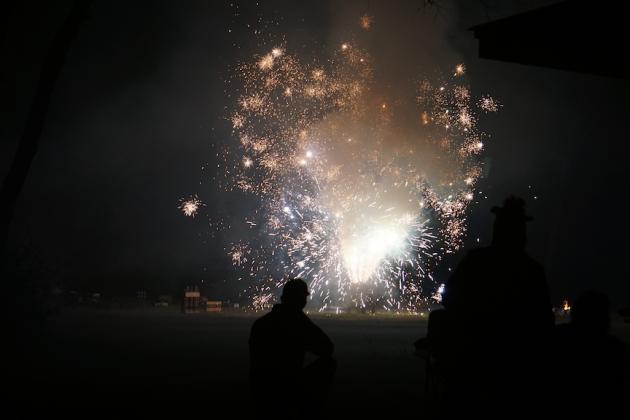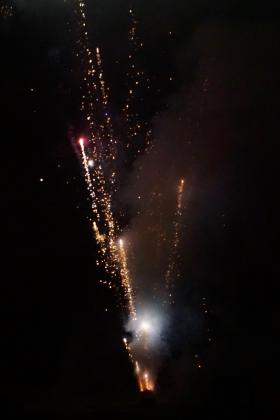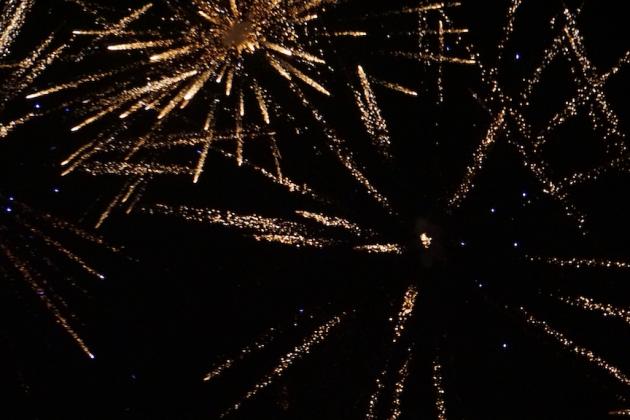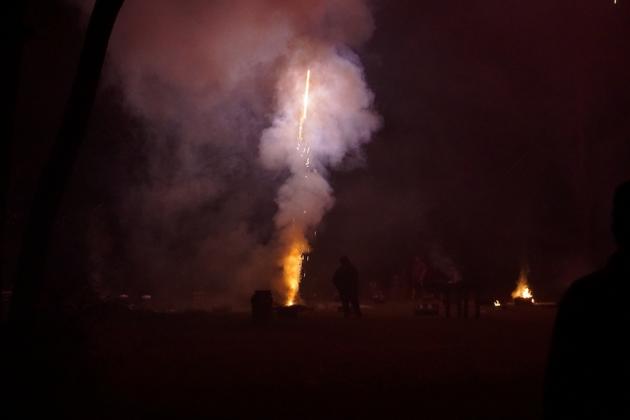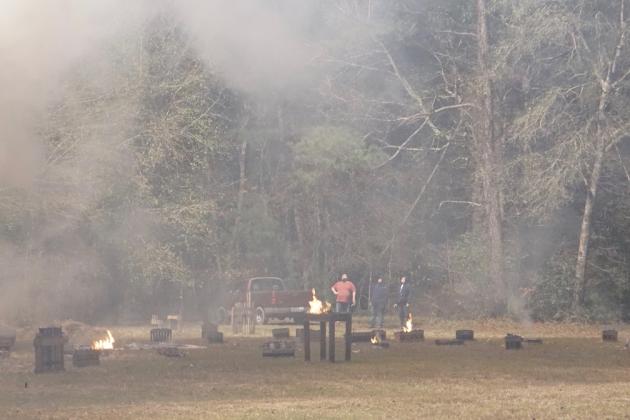Play with your camera at fireworks shows
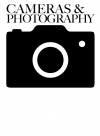
Before covering my first City of Liberty 3rd of July fireworks show, I read several articles on how to photograph fireworks and was glad I did because the instructions were the opposite of what I would have done otherwise.
The main thing to remember when photographing fireworks is that despite the shows taking place after dark, cameras must be set for shooting very bright light. Use ISO settings of 100 to 200 and small apertures of 8, 11 or smaller.
The best shutter speed to use depends on what the photographer is going for. In the past I have always tried to freeze the action, using high shutter speeds to get the sharpest images I could. This weekend I went to a fireworks show and decided to play around with my camera settings a little to see what other kinds of images I could make.
Again, I read a few articles ahead of time. Several advised using the bulb setting for very long exposures with the camera mounted to a tripod.
One writer even suggested controlling exposures with a black card held in front of the lens to avoid having the image distorted by even the slightest shake of the camera caused by the shutter release. He said he releases the shutter, waits for the right moment, removes the black card, and then puts it back in front of the lens before closing the shutter.
If my camera has a bulb setting, I couldn’t find it. That did not matter, though, because I was not investing in a tripod for a once or twice a year fireworks show. There are very cheap tripods for sale, and I have tried a couple of those, but they have been so flimsy as to be nearly useless.
I did take other advice offered in the articles. I turned off noise reduction to reduce the camera's processing time, used the largest file size available in my camera to get better detail, and switched to full manual mode.
The main things I did differently this time out was to use a longer lens, 55-200 mm, and because I was using the full manual mode, I set the focus to infinity. Then I repeatedly reset the focus to infinity because I kept accidentally fingering the focus wheel whenever I tried to zoom.
I also repeatedly adjusted the shutter speed to produce some sharp photos and others that would show light trails. Unintended camera shake is apparent in several shots. Some of the explosions were loud, very loud, loud enough to physically feel them. As a spectator I thoroughly enjoyed that aspect of it. As a wannabe photographer they were an unexpected nuisance.
However, what I take away from the experience is that it is hard to take a bad photo of a good fireworks show. It is possible. I took several bad ones. But apart from those, I like even the ones that came out in a way I had not intended. I would not normally run the more unusual ones in the newspaper. They are not what I think readers would expect or want to see, but I like them, anyway. Even a mistimed, over exposed shot with a tree in the way has a charm to it, but maybe I just like fireworks more than some people.
I probably will not use a long lens again, unless I am shooting from a greater distance. Wider is better when close to the action. Using my long zoom, I missed what would have been good shots when the fireworks seemed to fill the sky.
SUBSCRIBE to the print edition of THE VINDICATOR here for as little as 77¢ a week. Or, buy only the e-Edition for as little as 68¢ a week. Subscription rates start at $17.50. THE VINDICATOR has been reporting the local news and sports in Liberty County for 132 years now, and we've just about gotten the hang of it.

